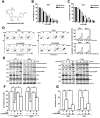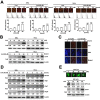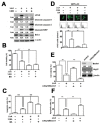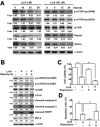Licochalcone A induces autophagy through PI3K/Akt/mTOR inactivation and autophagy suppression enhances Licochalcone A-induced apoptosis of human cervical cancer cells
- PMID: 26311737
- PMCID: PMC4745696
- DOI: 10.18632/oncotarget.4767
Licochalcone A induces autophagy through PI3K/Akt/mTOR inactivation and autophagy suppression enhances Licochalcone A-induced apoptosis of human cervical cancer cells
Abstract
The use of dietary bioactive compounds in chemoprevention can potentially reverse, suppress, or even prevent cancer progression. However, the effects of licochalcone A (LicA) on apoptosis and autophagy in cervical cancer cells have not yet been clearly elucidated. In this study, LicA treatment was found to significantly induce the apoptotic and autophagic capacities of cervical cancer cells in vitro and in vivo. MTT assay results showed dose- and time-dependent cytotoxicity in four cervical cancer cell lines treated with LicA. We found that LicA induced mitochondria-dependent apoptosis in SiHa cells, with decreasing Bcl-2 expression. LicA also induced autophagy effects were examined by identifying accumulation of Atg5, Atg7, Atg12 and microtubule-associated protein 1 light chain 3 (LC3)-II. Treatment with autophagy-specific inhibitors (3-methyladenine and bafilomycin A1) enhanced LicA-induced apoptosis. In addition, we suggested the inhibition of phosphatidylinositol 3-kinase (PI3K)/Akt/mammalian target of mTOR pathway by LicA. Furthermore, the inhibition of PI3K/Akt by LY294002/si-Akt or of mTOR by rapamycin augmented LicA-induced apoptosis and autophagy. Finally, the in vivo mice bearing a SiHa xenograft, LicA dosed at 10 or 20 mg/kg significantly inhibited tumor growth. Our findings demonstrate the chemotherapeutic potential of LicA for treatment of human cervical cancer.
Keywords: Licochalcone A; apoptosis; autophagy; cervical cancer.
Conflict of interest statement
None.
Figures







References
-
- Waggoner SE. Cervical cancer. Lancet. 2003;361:2217–2225. - PubMed
-
- Saslow D, Solomon D, Lawson HW, Killackey M, Kulasingam SL, Cain JM, Garcia FA, Moriarty AT, Waxman AG, Wilbur DC, Wentzensen N, Downs LS, Jr, Spitzer M, et al. American Cancer Society, American Society for Colposcopy and Cervical Pathology, and American Society for Clinical Pathology screening guidelines for the prevention and early detection of cervical cancer. J Low Genit Tract Dis. 2012;16:175–204. - PMC - PubMed
-
- Kontos CK, Christodoulou MI, Scorilas A. Apoptosis-related BCL2-family members: Key players in chemotherapy. Anticancer Agents Med Chem. 2014;14:353–374. - PubMed
-
- Janku F, McConkey DJ, Hong DS, Kurzrock R. Autophagy as a target for anticancer therapy. Nat Rev Clin Oncol. 2011;8:528–539. - PubMed
Publication types
MeSH terms
Substances
LinkOut - more resources
Full Text Sources
Other Literature Sources
Medical
Research Materials
Miscellaneous

